Outsourcing to Czechia

How much does it cost to hire developers in Czechia?
Dec 2nd 25 - by Devico Team
Find out how much it costs to hire software developers in Czechia in 2025. Compare hourly rates, roles, and factors that impact pricing.
Hire
Hire by role
Hire Front-end developers
Hire Back-end developers
Hire Full-stack developers
Hire Android developers
Hire iOS developers
Hire Mobile developers
Hire AI engineers
Hire ML engineers
Hire Automation QA engineers
Hire Blockchain developers
Hire Data engineers
Hire Cloud engineers
Hire by skill
Hire JavaScript developers
Hire TypeScript developers
Hire Ruby on Rails developers
Hire React Native developers
Hire Flutter developers
Hire Golang developers
Hire React.js developers
Hire Python developers
Hire PHP developers
Hire .NET developers
Hire Java developers
Hire Laravel developers

Tech debt
February 22, 2024 - by Devico Team
Summarize with:
"Ship now, refine later". Sounds pretty good, innit? But such a mantra can be intoxicating for businesses in the fast-paced digital environment. Sometimes seemingly functional software hides technical debt, accumulated through shortcuts, outdated code, and inadequate documentation under its belt. This software debt, like its financial counterpart, accrues interest in the form of reduced agility, slowed development, and compromised product quality.
You can ignore it, you can postpone it, you can do whatever else. But such moves are akin to sailing the open ocean with a rotting hull — sooner or later, the consequences will be dire. Like in one of the most famous examples of technical debt — the Nokia case.
A mobile giant, Nokia, faced a spectacular fall from grace. Despite its dominance in the early 2000s, the company struggled to adapt to the smartphone era. Among other reasons was technical debt, silently accumulated over the years. The decision to stick to their guns (existing operating system Symbian), became a significant hindrance. The company failed to invest adequately in the necessary technological breakthrough, and that led to a decline in market share and eventually selling its mobile division to Microsoft.
A remarkable reminder of the pervasive impact of technical debt on companies, irrespective of their size or previous success. In this article, we delve into what technical debt is, and why it's crucial. Also, we’ll take a look at outstanding technical debt examples to find out what to do with the bad code heritage.
Simply put, technical debt is a metaphor. It’s quite obvious that there is no any debt except financial or duty debt. Tech (or code) debt embodies the consequences of prioritizing short-term gains over long-term stability and maintainability in software development. In other words, it represents the compromise made between expedient, hasty solutions and the ideal, sustainable approach to building software.
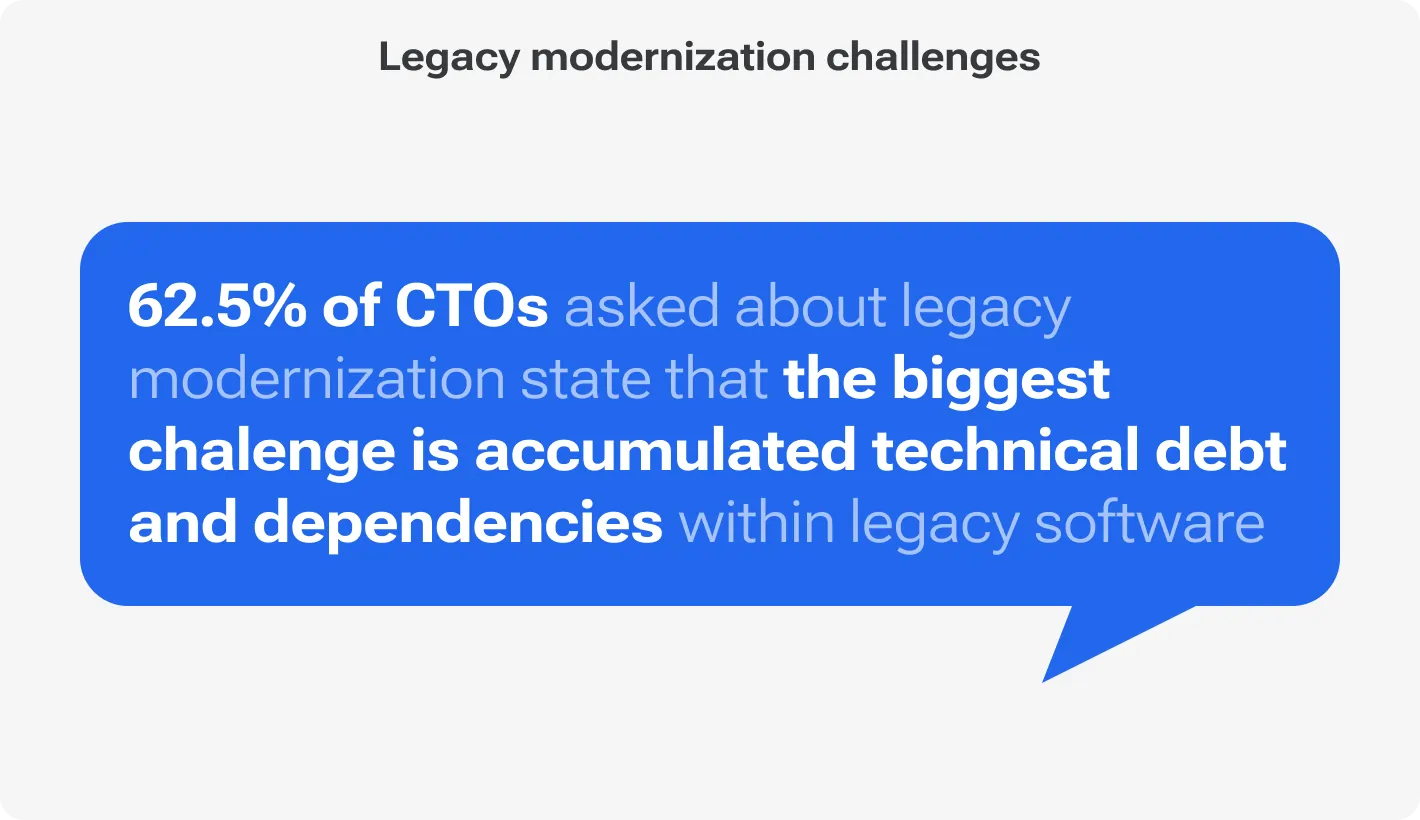
Have you seen a “Tower Heist” movie? In the scenario, a group of people from different walks of life with no criminal record try to pay one rich man back by robbery. However, they had no plan or understanding of how the crime was to be committed. In addition, one of the members of the group had a criminal trial. Something similar can be imagined about technical debt.
Consider another scenario where a development team opts for a quick and dirty solution to meet a tight deadline. This solution, like financial debt, incurs interest over time in the form of increased complexity, reduced flexibility, and higher maintenance costs. The metaphorical "debt" accumulates as the disparity between the quick solution and the optimal one widens.
Why Does Technical Debt Accumulate?
Tight Deadlines: When pressured by tight schedules, development teams may resort to shortcuts to deliver on time.
Evolution of Requirements: Changes in project requirements can render initial solutions obsolete, leading to the need for adjustments.
Resource Constraints: Limited resources, whether time, budget, or expertise, may drive decisions that prioritize immediate deliverables at the expense of long-term considerations.
A classic example of tech debt is the Y2K problem.
Think back to the 1960s and 1970s. That was a time when people made computer programs and decided to save space by using only two numbers to represent the year instead of all four. So, instead of using "1973," they would just use "73." This continued for a long time, even when computer memory became cheaper. Many of these programs were used for a really long time.
When it was about to be the year 2000, lots of businesses and government offices realized that there would be a big problem with how the dates were stored in the computer programs. This meant that a lot of important calculations wouldn't work properly. Fixing this mistake ended up costing a huge amount of money, around USD100B.
There are many flavors of this digital debt, each with its own insidious impact. For instance, infrastructure debt arises from outdated hardware, inefficient architectures, and neglected server maintenance. This inevitably leads to sluggish performance, scalability issues, and increased security risks.
Similarly, security debt accumulates through unpatched vulnerabilities, inadequate access controls, and weak encryption – a ticking time bomb waiting to explode in the form of data breaches and reputational damage.
But perhaps the most pervasive form is software debt: poorly written code, spaghetti-like dependencies, and a lack of unit tests.
After technical debt meaning, it’s important to understand its influence. For this reason, the main point is that technical debt influences not just the code but the overall success and sustainability of a product. We've identified the insidious nature of technical debt, but understanding its full impact is crucial to prioritizing tech debt remediation.
Velocity Killer and Innovation Roadblock: Basically, your development team is like a camel caravan. And the more you load up those camels, the slower the caravan will go. This is the essence of technical debt — to slow down development. Each bug fix, code refactor, and documentation update becomes a pit stop, delaying the delivery of new features and innovation. DXC Leading Edge Research reveals that companies with high technical debt experience a 46% decrease in development velocity and innovation opportunities.
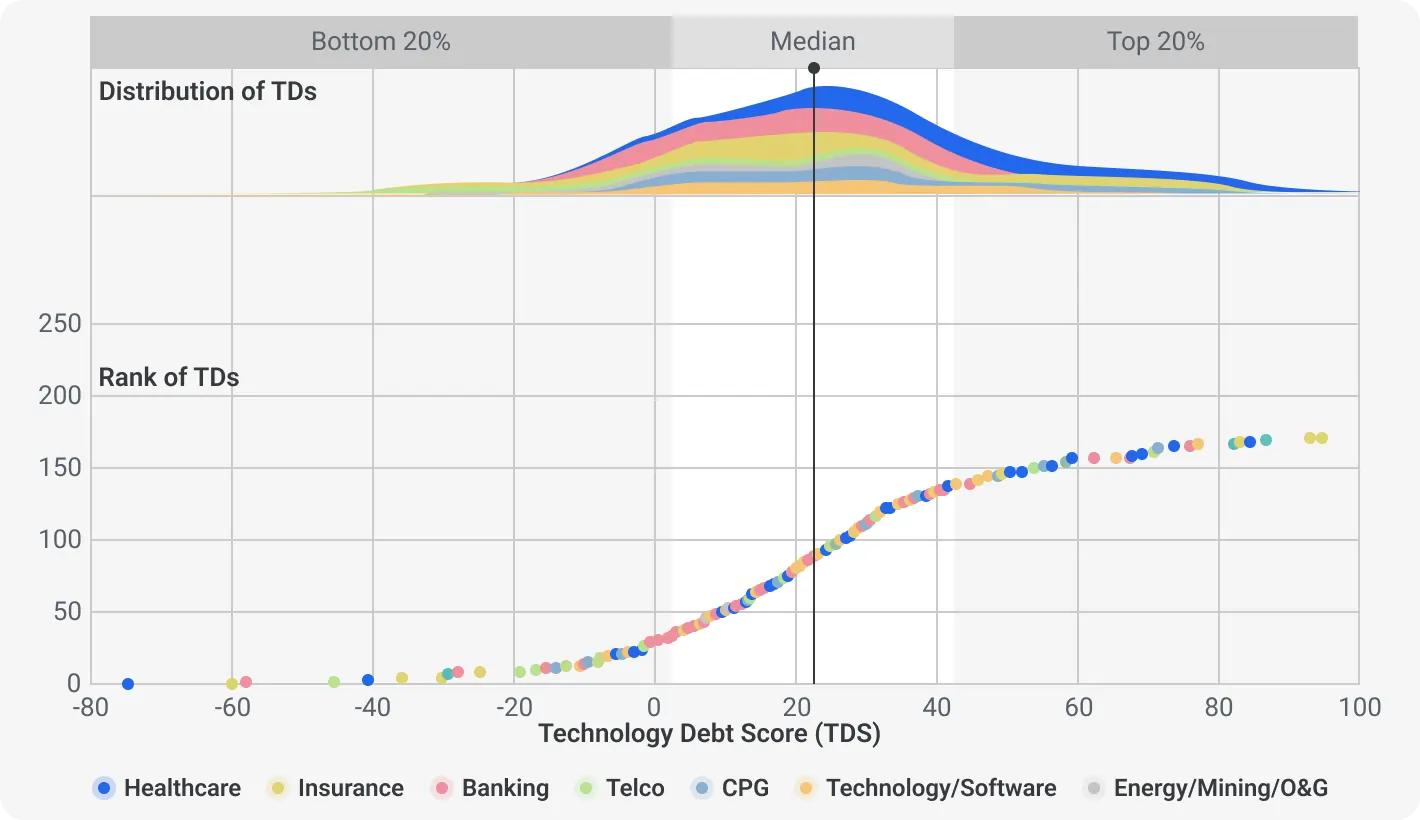
Quality Crusher: Technical debt erodes the user experience drastically and directly affects the quality of a product. It’s like building a skyscraper on shaky ground; software laden with technical debt is prone to bugs, glitches, and reduced performance. McKinsey’s survey found that 80% of companies with low TDS have 20% higher revenue growth.
Cost Multiplier: Ignoring technical debt today leads to exponentially higher costs tomorrow. The longer you wait, the more tangled the web becomes and the more expensive it is to untangle. Take the Southwest Airlines case, for instance. Famous company abandoned grappling with technology debt which resulted in a USD 800M loss.
Future Foe: Even minimal code debt can loom over your product roadmap. It restricts your ability to implement new features, adopt new technologies, and scale your software effectively. This neglect hampers innovation and hinders your ability to adapt to changing market demands. And if you tolerate debt, you’ll fall behind all your competitors.
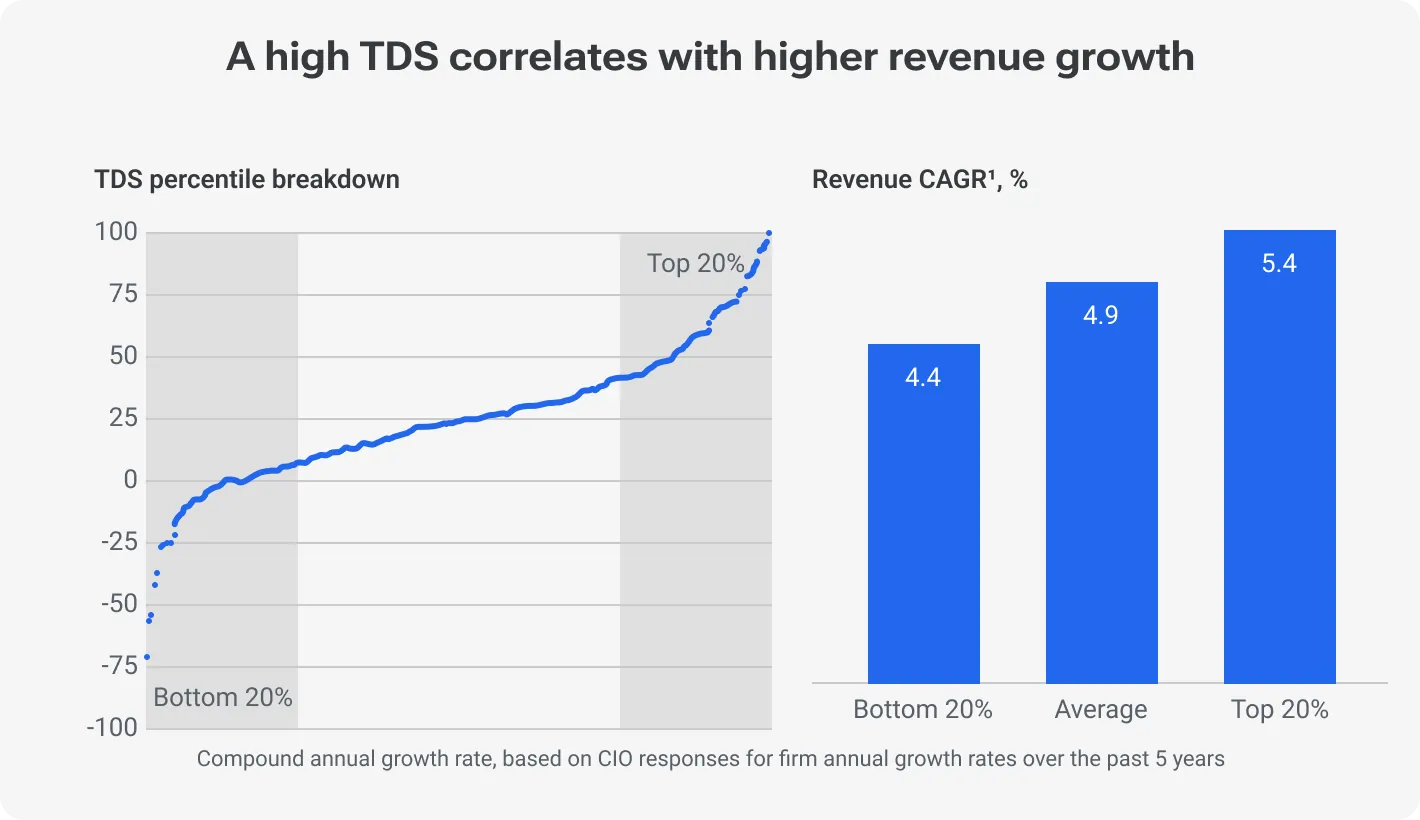
Employee Morale and Retention: Working on a codebase laden with technical debt always demoralizes devs, testers, and the entire team. It hinders their ability to produce high-quality work and contributes to burnout. As a consequence, it’ll be challenging to attract and retain top-tier talent.
Understanding the root causes of technical debt is essential for developing effective strategies to mitigate its impact. Let's dissect the factors that contribute to the accumulation of technical debt.
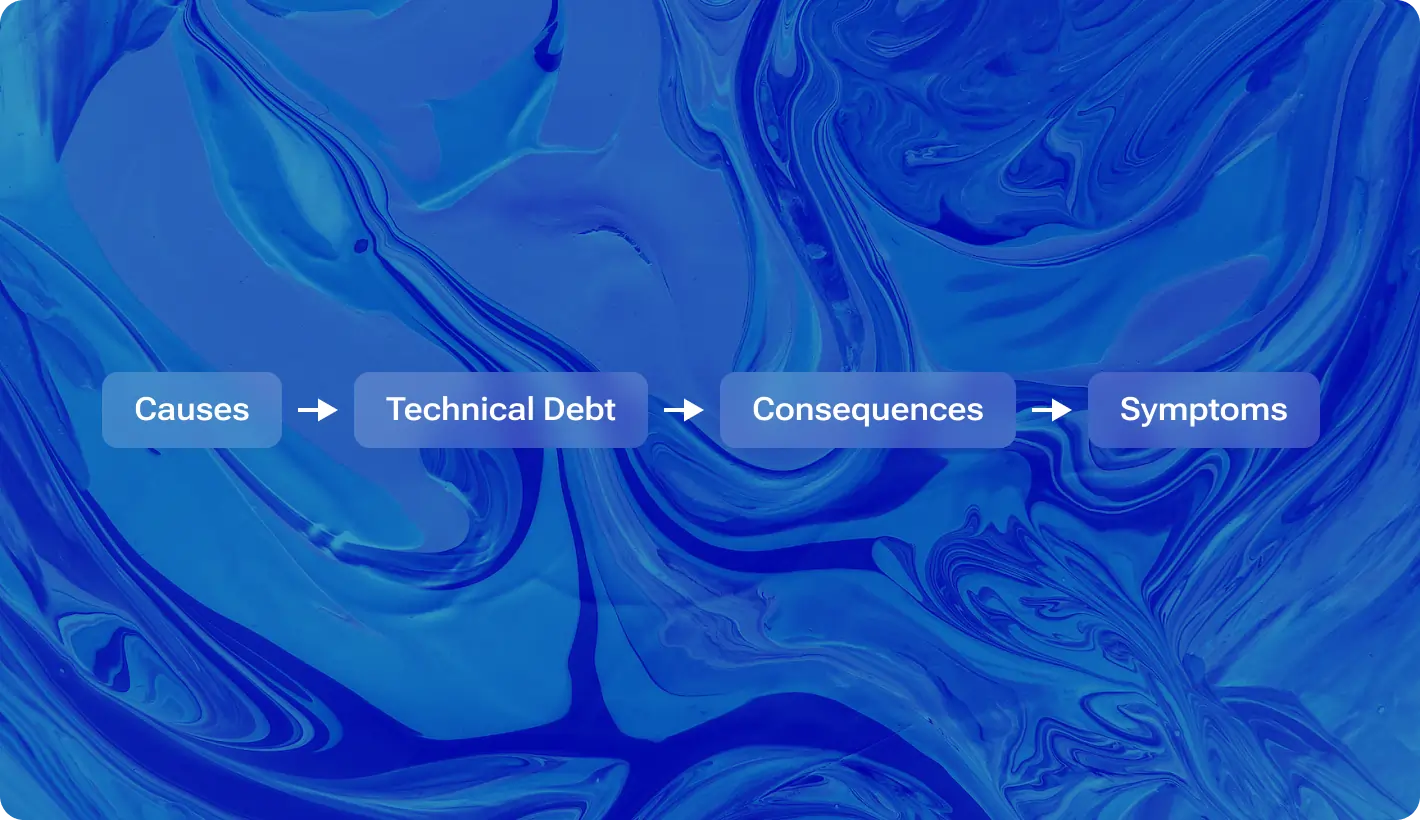
If you want to build a house, you need a blueprint. At least. So do clear requirements when developing software. One of the primary culprits behind technical debt is unclear or evolving project requirements. Especially when all evolved directives haven’t been taken down in a separate comms channel or doc. When the development team lacks a comprehensive understanding of project goals and user needs, they may make wrong dev decisions.
Poorly written or hastily constructed code is exactly that shaky ground for the future product. Rushed coding decisions, being completely in the dark about coding standards, and a disregard for best practices contribute to the accumulation of debt. All those things impede readability and introduce a host of future issues, just postponed ones.
Metaphor about building without a blueprint is actual in this case too. Because without clear instructions, you ain’t build something stable and functional. Incorrect documentation leads to the need for technical debt remediation since it makes it challenging for developers to understand and work with existing code. When crucial aspects of the system lack proper documentation, onboarding new team members, debugging, and making modifications become more time-consuming and error-prone.
Insufficient testing practices, whether due to time constraints or oversight, contribute significantly to technical debt. Inadequate test coverage leaves room for undetected bugs and vulnerabilities, which can lead to costly issues down the line. Implementing robust testing procedures is crucial for preventing the accumulation of technical debt.
Think of your company as a football team. Without communication, you are not going to lead the team as a coach. Communication breakdowns and company-wide information silos exacerbate technical debt. When knowledge is confined to individual team members, changes made by one may not be communicated effectively to others. This lack of transparency can result in divergent understandings of the codebase, leading to inconsistencies and technical debt.
7 ways product managers can help manage technical debt
Code debt can also differ from one another. It takes many forms, each with its peculiarities. Let's run through some concrete examples of technical debt to better understand the diverse manifestations of this digital flaw and its impact on software performance.
Have you ever seen a match between retired footballers and actual EPL stars? Old athletes will fall behind a bit, hands down. The same story applies to infrastructure debt. Because infrastructure is a fundamental thing in software development realms. Imagine your website hosted on a vintage PC from the 90s. Outdated hardware, inefficient server configurations, and neglected maintenance… All that creates infrastructure debt. This moves over to sluggish performance, frequent outages, and an inability to scale during peak traffic. And, consequently, to frustrated users and lost revenue.
You can spot it by:
Outdated language syntax.
There is a need for upgrades.
The present crew rarely touches or understands some parts of the program.
Dependence on obsolete libraries.
Security debt is a dramatic result of unpatched vulnerabilities, weak access controls, and inadequate encryption. So, there is nothing groundbreaking if such a “defense” has been broken down. Data breaches, financial losses, regulatory fines — any security manifestation contributes to the overall downfall.
Example: In 2017, Equifax, a leading credit reporting agency, experienced one of the most significant data breaches in history. The breach, attributed to unpatched software vulnerabilities, proved that neglecting security issues inevitably leads to a drastic outcome — the aftermath was at least USD 425M.
But beyond the financial losses and legal repercussions, the breach damaged the company's reputation, eroding trust among consumers and stakeholders.
Software debt is the type that embodies poorly structured or complex code that hinders the maintainability and extensibility of a software system. Simply put, if your codebase is too sophisticated and badly structured, if it includes duplicated code or tight coupling between components — congrats, very likely you have a software debt. Refactoring and redesigning the codebase are essential strategies for addressing such a problem.
Example: Think back to the late 1990s. Netscape Navigator was the dominant web browser. However, the rise of Internet Explorer and the delayed response to software debt played a pivotal role in Netscape's decline. The complex codebase made it challenging for Netscape to adapt to evolving web standards and innovate rapidly. The outcome Navigator bowed out.
How to avoid tech debt in software implementation
Last but not least, one more example of technical debt — documentation debt. Have you ever been trying to assemble furniture without instructions? When you are trying to create a functional program, documentation debt makes your plans go down the drain. Incomplete or outdated documentation hampers knowledge transfer, onboarding of new team members, and effective collaboration. Never shy away from prioritizing documentation; it’s an integral part of the development process and is key to mitigating this form of technical debt.
Example: While not a software development example, the Space Shuttle Challenger disaster dramatically illustrates the impact of documentation debt in a critical system. The lack of clear and transparent documentation regarding the O-rings' vulnerability in cold temperatures contributed to a fatal decision. The inadequate documentation obscured the risks, leading to the tragic failure of the shuttle.
First and foremost, the loss of human lives. Also, the loss of the Challenger had profound implications on NASA's reputation, space exploration programs, and the understanding of the importance of transparent documentation.
When you plan how to deal with technical debt, there are no other alternatives — only a strategic balance between immediate needs and long-term ROI. Addressing high-impact, low-effort issues early delivers immediate returns, building momentum for tackling more complex challenges. Collected six strategic ways to head off tech debt-related issues.
Robust code review practices are a cornerstone of managing technical debt. Regular peer reviews not only catch potential issues early in the development process but also promote knowledge sharing among team members. Speaking from experience, some companies implemented collective code reviews. For example, testers, devs, and other tech specialists from different projects check the code to ensure it’s optimal. In this case, it’s essential to remember constructive feedback: teams can collectively maintain a high code quality standard without arguing and bickering, reducing the likelihood of technical debt accumulation.
Let’s take an example. You don’t like cleaning in your kids’ room, do you? And code refactoring has some similar activities. Just like how you organize their toys and clothes to make it easier to find what they need, devs organize their code to make it easier to understand and work with. Refactoring doesn't change what the code does, but it makes it easier to read and change in the future.
Code refactoring entails restructuring and enhancing your code, removing redundancies, simplifying complex structures, and improving maintainability. If you ask a seasoned dev about the best investment, many would name code refactoring. This strategic move minimizes technical debt accumulation, lowers future development costs, and empowers your software to adapt and evolve with agility.
Automated testing is a powerful tool for identifying and preventing technical debt. Comprehensive test suites catch regressions and potential issues early in the development cycle, reducing the chances of introducing new debt. Incorporating automated testing into the continuous integration pipeline ensures that code changes are validated systematically, contributing to a more robust and resilient codebase.
Just as established laws govern a kingdom, consistent coding standards ensure order and efficiency within your software ecosystem. This is a logical continuation of refactoring (in some senses). Adhering to these shared practices across the team minimizes redundancies, simplifies collaboration, and prevents the codebase from devolving into chaos — a major contributor to technical debt.
Consistency enhances code readability, reduces the likelihood of introducing new debt, and streamlines collaboration. Regularly update and refine coding standards to ensure they align with industry best practices. This is not to mention evolving demands and requirements.
As we said before, clear, up-to-date documentation is akin to a detailed map for developers. Invest your time in comprehensive documentation, and you’ll get great returns — developers who understand functionalities, APIs, and architecture. And therefore, satisfied users.
Documentation serves as a critical tool in mitigating documentation debt. Also, as a CEO, CTO, or business owner, you should always keep in mind future scaling and mounting up the team. Comprehensive documentation facilitates knowledge transfer, onboarding of new team members, and effective collaboration.
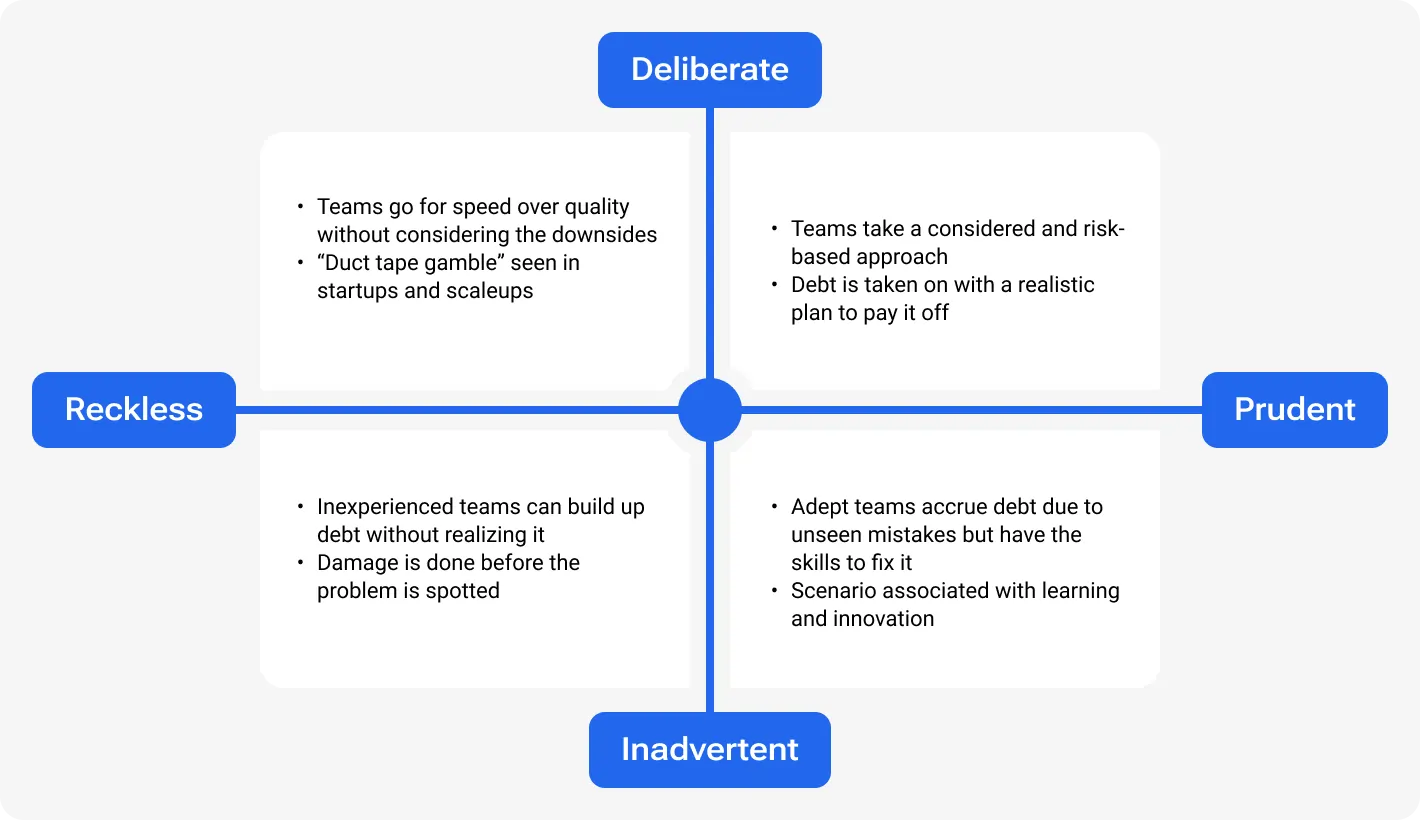
Adopt the concept of the Debt Quadrant. Such a tool will empower your teams to categorize technical debt based on its nature and impact. Analysis is the right hand for eliminating code debt since evaluating whether the debt is intentional or unintentional and whether it is reckless or prudent is crucial in this case. Strategic decision-making guided by the Debt Quadrant analysis enables teams to prioritize and address debt systematically, aligning with broader business goals.
Technical debt, like any hidden liability, can silently (or loudly) erode the stability of your software. Code debt is especially dangerous when it comes to scaling a single program into the ecosystem. Do away with ignoring it since you risk hindering agility, compromising quality, and jeopardizing long-term competitiveness. Yet, the good news is — you're not powerless.
There are at least six proven ways to start technical debt remediation. Also, don’t forget about the DevOps approach that helps to tune a tech part of your team.
But remember, addressing technical debt is not a one-time fix but an ongoing commitment. Be consistent; implement the mentioned strategies and foster a culture of proactive management if you want to morph your software landscape from a debt-ridden battlefield into a one-horse race.
Outsourcing to Czechia

Dec 2nd 25 - by Devico Team
Find out how much it costs to hire software developers in Czechia in 2025. Compare hourly rates, roles, and factors that impact pricing.
Outsourcing to Czechia

Nov 25th 25 - by Devico Team
Compare Czechia and Poland for software outsourcing in 2025. Discover costs, talent, infrastructure, and which country fits your project best.
Outsourcing to Czechia

Nov 18th 25 - by Devico Team
A complete guide to outsourcing software projects to Czechia, learn about costs, talent, benefits, and how to build successful partnerships in 2025.